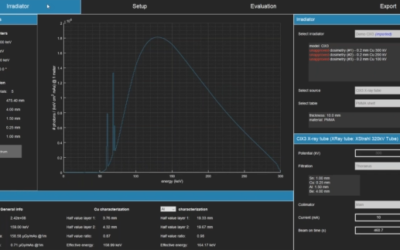The University of Glasgow recently added a second SARRP research system to its translational radiation biology laboratory in the University’s Institute for Cancer Sciences. Dr. Anthony Chalmers, Chair of Clinical Oncology, described his team’s work on cancers of unmet need including glioblastoma, pancreatic and rectal cancer.
One of the team’s primary aims is to improve outcomes for glioblastoma patients by combining radiotherapy with radio-sensitizing drugs. Equally important, they are testing the effects of such drug-radiation combinations on the normal brain. More recently, their work has built on existing expertise in Glasgow to study the impacts of radiation on invasion. All of these projects have required the use of the SARRP to deliver fractionated radiotherapy to the brains of mice. Somewhat unexpectedly, the combination of a novel anti-invasive compound with radiotherapy improved overall survival of the mice. For this project it is important to understand whether the effects of radiation are exerted purely on the tumor cells or whether the normal brain might also be affected by radiation to enhance invasion of the tumor cells. Dr. Chalmers pointed out that this is “a very simple example of how we can use SARRP to give us extra detail that would not have been possible with previous facilities.”
To further optimize their use of the SARRP, the Glasgow team evaluated a range of different irradiation approaches, including simple beam arrangements and more complex arc techniques that utilized either gantry or couch rotations. By evaluating dose volume histograms, they determined that all techniques were safe and provided excellent tumor coverage but had differential effects on the ipsilateral and contralateral hemispheres of the brain. Doses to the brain stem, eyes and mouth were very low. See more in the clip below.
Since being awarded Cancer Research UK ‘Radiation Research Centre of Excellence’ status in 2019, radiotherapy research in Glasgow has flourished. Newer SARRP projects include optimizing treatment of orthotopic rectal and pancreatic tumors, with a view to studying a variety of radiation related phenomena including immune responses to radiation in immunocompetent mice.
In conclusion, Dr. Chalmers stated that the recent studies “show how the SARRP can accurately deliver complex plans to the brain, abdomen and pelvis” and how “this is really important when you’re interested not only in tumor responses, but also in responses of the adjacent normal tissues, and for longer-term studies where you want to look at late effects of radiation.”







